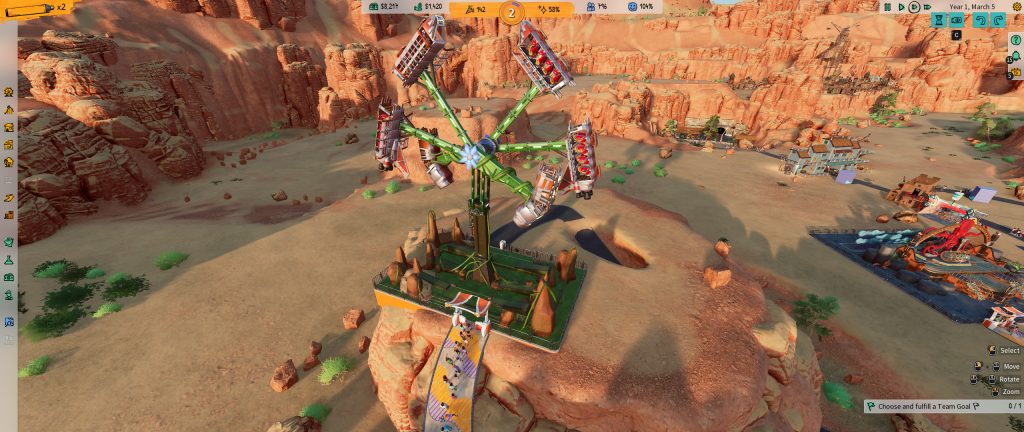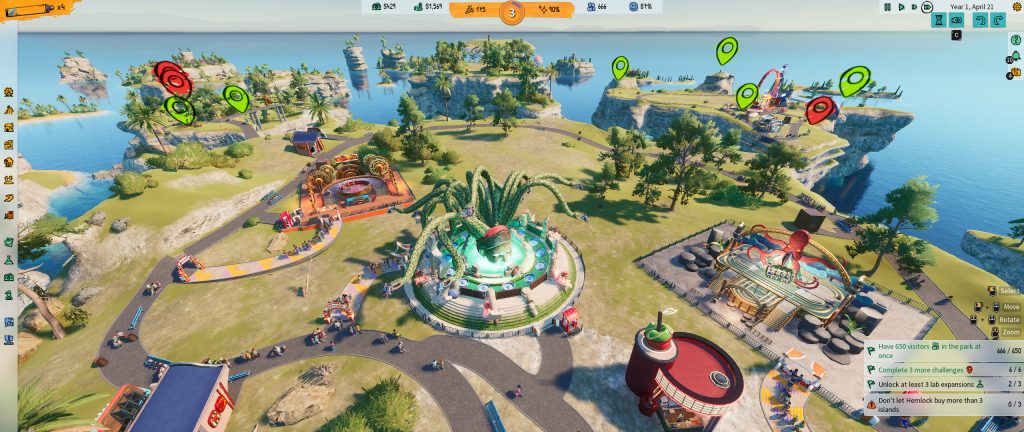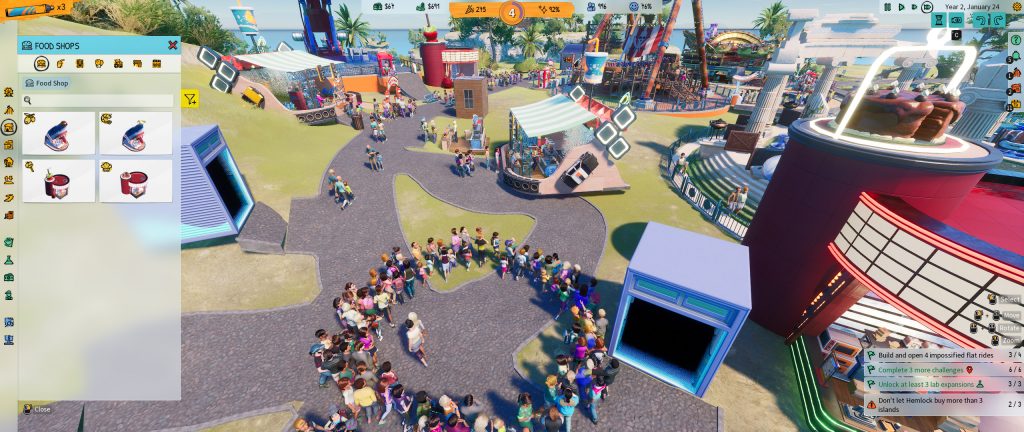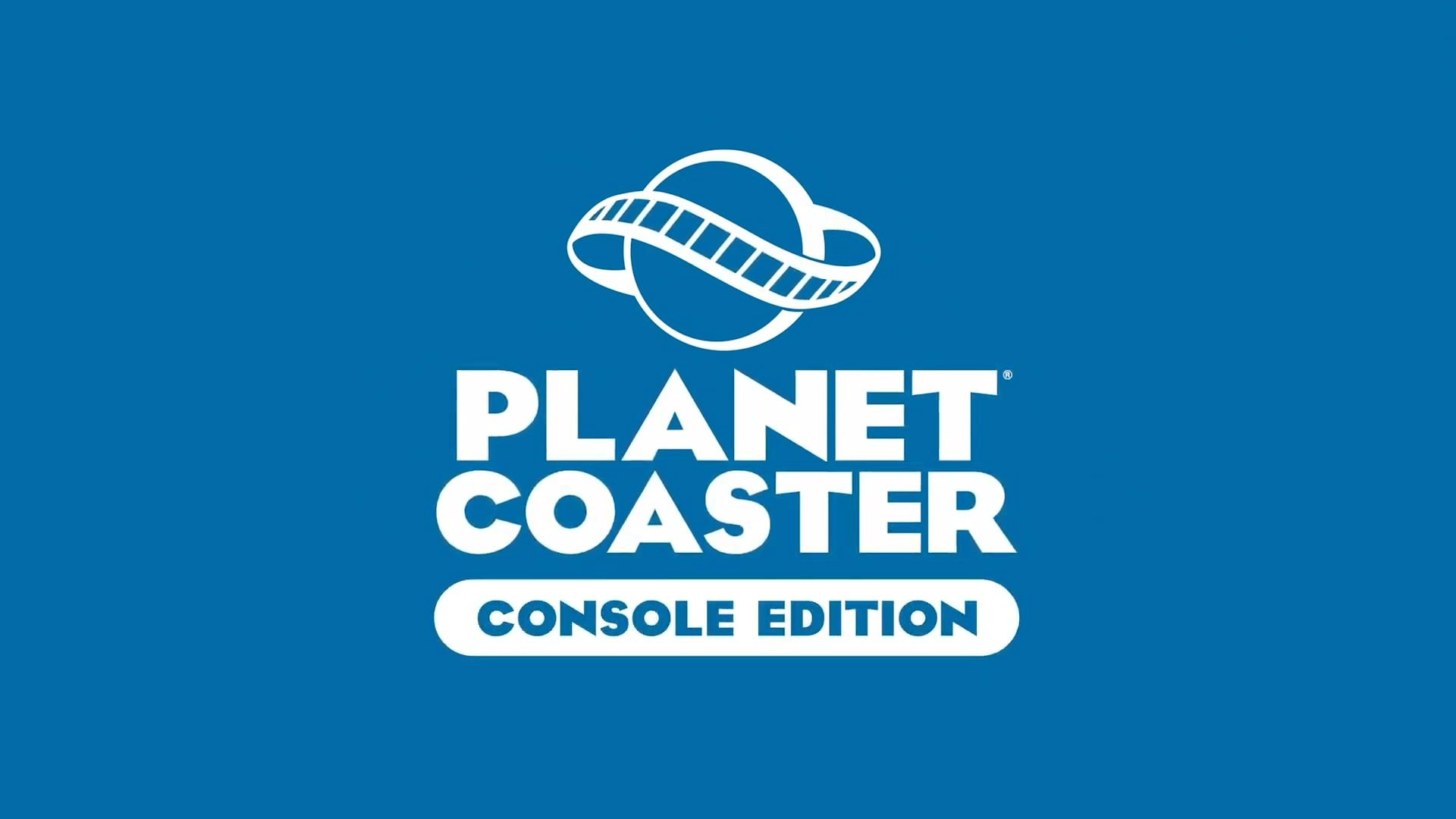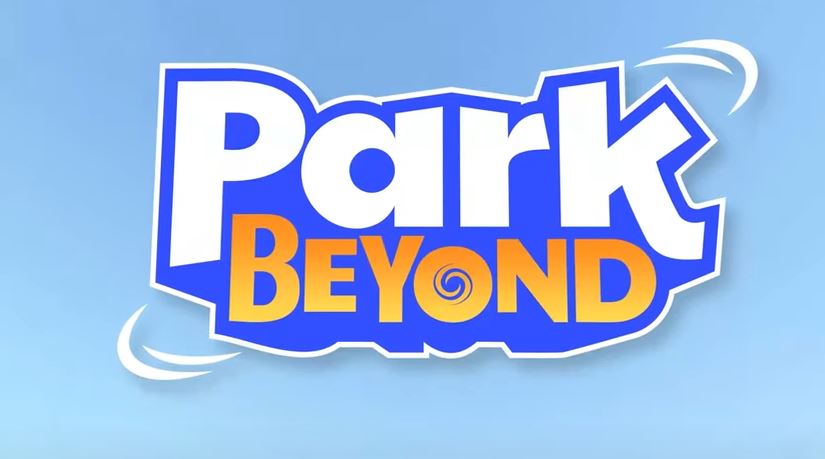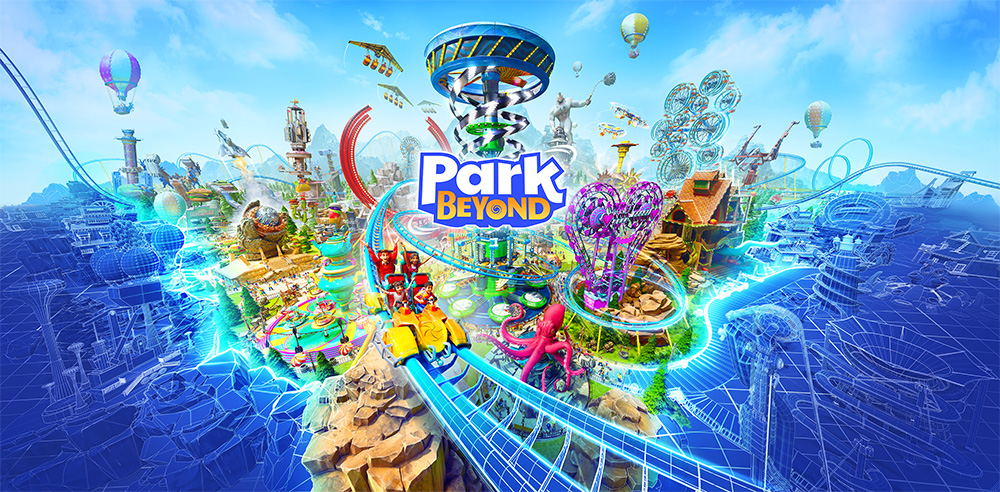
The theme park management genre has roots stretching back decades now. While most will remember fondly older games like Theme Park or Rollercoaster Tycoon, I remember getting my start with the off-brand zoo-hybrid educational version, Dino Park Tycoon. We’ve seen a few more recent entries into the genre, but Park Beyond has now come along with its own unique spin to entice would-be theme park managers – ‘impossification’. This gimmick aside, Park Beyond presents a standard theme park manager that mixes creativity with the business side reasonably well, along with the tools for some complex roller-coaster building, if you’re up for it.
You can start building your own theme parks in the game’s sandbox mode, but a campaign mode is also present that serves both as a tutorial for Park Beyond‘s systems, and a challenge to see how you react to certain conditions and goals. This mode has chatter from an array of likeable characters, from the strict financial manager to the over-excited Willy Wonka-esque owner, as you join their company designing theme parks and upgrading old ones from states of disrepair. While earlier missions are relatively easy, the back half of this mode has a somewhat sudden increase in difficulty, starting with a race to build a theme park over several islands before a real-estate developer buys them up before you. These missions can tend to drag on for quite a long time, especially as the difficulty increases, making for a laid-back game mode that can nonetheless frustrate when things aren’t going your way, and you have to restart all over again.
You’re able to design theme fairly easily with the array of tools on offer, usually starting by building the skeleton with paths around the environment, then adding benches, bins, toilets and shops. You can choose from pre-designed ‘flat rides’ to dot around your park, which are essentially variations on familiar carnival attractions you’d find at the Royal Melbourne Show, or you can design your own roller coasters using a robust creation tool that allows you to precisely plan out hills, dips, loops and corkscrews.
Of the two types of rides, I found myself gravitating to using flat rides more often than roller coasters, as they’re much less time consuming to set up, and require far less planning. Of course, if your dream is to create the roller coaster of your dreams, then you’re able to twist your created track around some cool environmental features (lakes, waterfalls, rock arches) to make some pretty entertaining rides. They just require a lot of fore-thought, as each roller-coaster must have at least two ‘hooks’ to be deemed worthy of rider attendance, such as reaching a certain height, or even splitting up rider cars and returning them to the home station in a completely different order. It’s actually pretty complex, not just laying out the track, but knowing what each module and track type does, and you could easily spend an hour just designing one ride, especially as you get used to the height and placement controls. The flat rides, by comparison, are a lot more generic, but you only need to plonk them down with a single click, then build an entrance and exit.
Impossification is the game’s central ‘wow’ factor, that allows you to upgrade rides into impossible versions that wouldn’t exist in reality. These are largely visual gimmicks, such as turning an animatronic Kraken ride into a living, breathing monster flipping riders around, or upgrading Ferris wheels into shapes that shouldn’t work, but they increase your park’s appeal and draw, and allow you to set higher prices for your rides. Roller coasters get some impossification mods to make them more dangerous, like launching riders over gaps. Shops can be impossified too with neat attraction signs out the front, and staff members can be impossified to improve their efficiency. As a gimmick, it’s fine, and lends some visual sparkle and appeal to theme parks you create near-instantly. I’d call them ‘cute’ – they’re not rooted in reality enough to be a truly impressive feat of engineering, and you don’t really have enough control over them to make them truly personalised.
All of this lends to a fairly laid-back simulation experience, with both light creativity and business management elements. If you want, you can go full creator-mode and try to theme various parts of the park to different settings (like sci-fi or western), but it can get a bit fiddly making sure all your scenery matches, and to be honest most of the time your park will work just as well if you hadn’t bothered. What can take up more of your time is balancing the chequebook, as you have total control over the prices on the park itself, individual rides, individual items at shops, and even access to toilets. Making a profit is all about constantly checking easily-available visitor feedback to see which prices they’ll accept, and which they’ll balk at, and sliding prices up and down accordingly.
You don’t seem to have as fine control over your staff, however. You can give them raises or paycuts, and add staff lounges around the park to keep them satisfied, but there isn’t much you can do to point a janitor to a specifically grubby area of the park and say ‘clean here’, or point a mechanic at a particular ride that’s nearly broken down and tell them to fix it. You just have to rely on their internal AI and pathfinding that they’ll find the right area, which is particularly irritating if your fun or cleanliness rating is suffering in the campaign mode, and you’re on the clock. Speaking of pathfinding, there’s also still quite a few bugs we came across, particularly with visitors getting stuck on infinite loops on regular paths, slowly dying of hunger and thirst.
Park Beyond has a good mix of creative and business elements, enough for a fun and light theme park management experience. Depending on your patience, you may or may not want to get further involved in creating or re-creating your favourite roller coasters, but even if you’re happy to just plonk down some pre-fabricated rides, Park Beyond is a pleasant enough way to while away a few hours as you create your own theme park empire. The impossifications are more of a cute visual upgrade than a gameplay-altering experience, but even without them Park Beyond is a charming and solid theme-park sim.
This review is based on review code on PC provided by Bandai Namco.
– Laid-back theme park simulator with light creative and business management elements – Impossification adds some cute visual flair to your attractions
– Trying to customise attractions and the park itself can be overly fiddly – Not enough control over certain aspects, like staff

